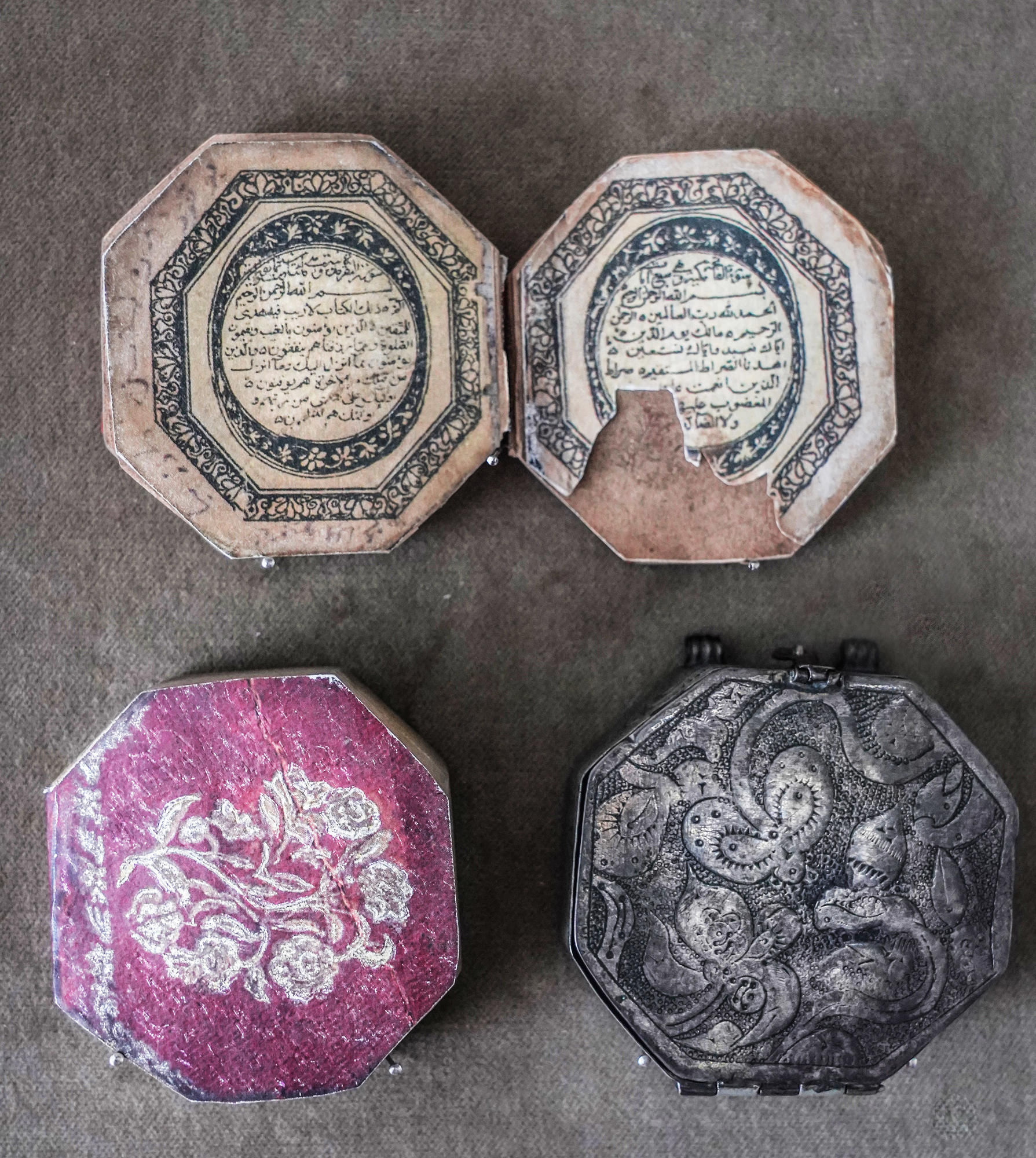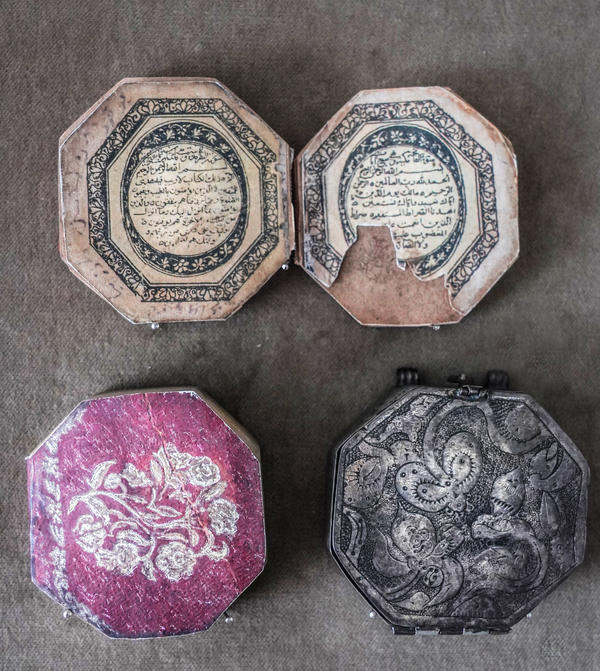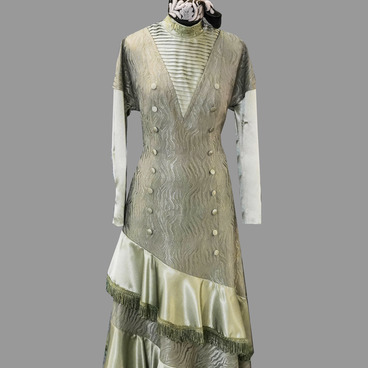The octagonal small-format cased-up Quran presented in the museum display case is an example of a miniature lithographic publication. Although it is not unique, it represents one of the distinctive signs of its time. The Quran case is modestly decorated with elegant embossing made by skillful hands of local craftsmen.
Until the middle of the 19th century, a miniature Quran was a work of art, much like painting masterpieces: they were extremely rare being creations of virtuoso calligraphers, because only a genius master could write the text of the Quran in a tiny book of 3×2 centimeters in size by hand. Such miniature books were kept in special holders: Quran cases covered with elaborate carvings or inlaid with precious stones were so beautiful that women used them as jewelry and amulets.
Moreover, the emergence of Quran cases is directly related to the Muslim ritual prescribing that the Holy Book may not be touched until after an ablution. Keeping a Quran in a silver or leather Quran case is fully consistent with traditions.
Miniature Qurans started getting more numerous with the spread of book printing in Muslim countries in the late 19th - early 20th centuries. They were mostly used by women not only as their copies of the Holy Book, but also as elegant accessories.
There is a legend that Empress Catherine II used miniature cased-up Qurans to award Muslims called up for military service, as it would have been wrong to award them with crosses like Orthodox soldiers. And among the soldiers following Islam, there were many brave men, who deserved awards. It is unknown who prompted the idea to the empress, but it was certainly a good one.
Some books were so small that, in addition to a case, they came with a magnifying glass for reading fine, almost microscopic print. The miniature Quran included in the Guinness Book of Records has 300 pages, it is only 2.6 centimeters high, 1.8 centimeters wide and 1 centimeter thick.
Some famous men also enjoyed wearing miniature editions of the Holy Book. One of them was Tatar historian, theologian and educator Rizaetdin Fakhretdinov, who was proud of his miniature Quran printed in St. Petersburg.
Until the middle of the 19th century, a miniature Quran was a work of art, much like painting masterpieces: they were extremely rare being creations of virtuoso calligraphers, because only a genius master could write the text of the Quran in a tiny book of 3×2 centimeters in size by hand. Such miniature books were kept in special holders: Quran cases covered with elaborate carvings or inlaid with precious stones were so beautiful that women used them as jewelry and amulets.
Moreover, the emergence of Quran cases is directly related to the Muslim ritual prescribing that the Holy Book may not be touched until after an ablution. Keeping a Quran in a silver or leather Quran case is fully consistent with traditions.
Miniature Qurans started getting more numerous with the spread of book printing in Muslim countries in the late 19th - early 20th centuries. They were mostly used by women not only as their copies of the Holy Book, but also as elegant accessories.
There is a legend that Empress Catherine II used miniature cased-up Qurans to award Muslims called up for military service, as it would have been wrong to award them with crosses like Orthodox soldiers. And among the soldiers following Islam, there were many brave men, who deserved awards. It is unknown who prompted the idea to the empress, but it was certainly a good one.
Some books were so small that, in addition to a case, they came with a magnifying glass for reading fine, almost microscopic print. The miniature Quran included in the Guinness Book of Records has 300 pages, it is only 2.6 centimeters high, 1.8 centimeters wide and 1 centimeter thick.
Some famous men also enjoyed wearing miniature editions of the Holy Book. One of them was Tatar historian, theologian and educator Rizaetdin Fakhretdinov, who was proud of his miniature Quran printed in St. Petersburg.



